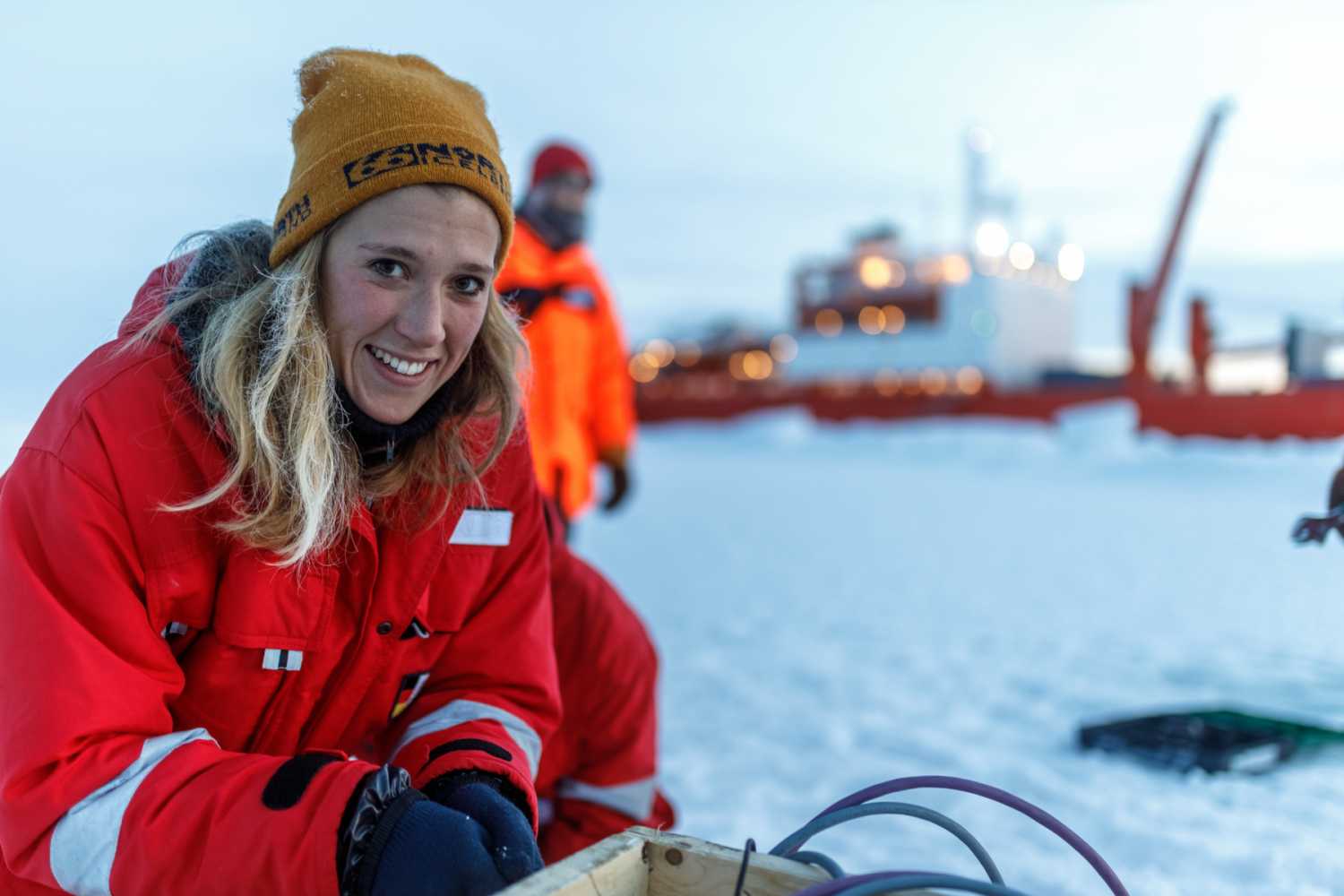Sennheiser documents polar ice cap expedition
- Details

During the expedition, the Polarstern had docked onto Arctic sea ice and drifted through the Arctic Ocean on a gigantic ice floe. As the ship drifted with the ice, it had contact with a network of measuring stations covering many kilometres. One aim of the expedition was to gain a better understanding of the Arctic’s influence on the global climate in order to make more reliable predictions.
One of those taking part in the expedition was Friederike Marie Krüger, a German teacher who had the opportunity to exchange the classroom with a research ship for six weeks in order to create teaching materials. In addition to creating a short documentary of the expedition, which she recorded using Sennheiser microphones, her teaching materials are available on the expedition’s education subsite.
Friederike Marie Krüger who works as a geography teacher, said, “It was entirely by chance that I came across an advertisement for the MOSAiC expedition – they were explicitly looking for teachers to accompany the project. Actually, this is quite common practice in research expeditions, as the aim is to open up additional perspectives to a broader public.”
To record her Arctic impressions, Friederike Marie Krüger borrowed a compact camera with a CMOS sensor and a built-in zoom lens. She also took two Sennheiser microphones along with her.
Krüger quickly learned how to master the previously unfamiliar video and audio equipment: “I told myself that it can’t be all that difficult to record my personal impressions in sound and pictures,” is how the teacher described her learning-by-doing approach, which turned out in the end to be a positive one. “The video recordings in 4K and full HD resolution came out really well, and the same is true of the sound,” Krüger said. “At the beginning, I never thought of taking along external microphones and only intended to use the compact camera. But fortunately, just five days before I left, two Sennheiser microphones arrived.”
For her sound recordings on the expedition, Friederike Marie Krüger used two proven Sennheiser microphones. For indoor recordings on board the ship, she mainly used an MKE 440 mounted on the camera’s shoe mount. In this compact stereo microphone, two capsules in a V-shaped configuration acoustically cover an area corresponding to the recording angle of a 35 mm camera lens – ensuring homogeneous coverage of the entire area with particularly high speech intelligibility in the image focus.
With capsules that are elastically suspended inside, it goes without saying that the MKE 440 is protected against structure-borne noise. A fine but extremely sturdy wire mesh made of stainless steel protects the microphone capsules against mechanical damage and also reduces wind noise, but without impairing the high-frequency sound image – which is a problem with foam windscreens. The steel mesh also serves as an effective shield against electromagnetic interference. When outside, Friederike used an MZH 440 fur windshield for the microphone.
For outside recordings, Friederike Marie Krüger mostly used a Sennheiser MKH 416, which was protected from wind noise by an MZW 60-1 basket windshield fitted with an MZH 60-1 hairy cover made from long-haired polyester fleece. The short shotgun microphone was mounted on an MZS 20-1 suspension with a pistol grip that made it easy to control. “I quickly learned how important it is in an interview situation to point the shotgun microphone directly at the interview partner,” Friederike Krüger added.
The MKH 416 was connected via an XLR cable to a Sennheiser MZA 14 P 48 U battery power supply unit, which also provided it with phantom power. The microphone signal was recorded with automatic level control through the compact camera’s 3.5 mm stereo mini jack input. The recordings were stored on SD cards inside the camera until Krüger was able to save them on her laptop and external hard drives when she got back on board the ship.
“The Sennheiser microphones did a fantastic job in spite of the harsh Arctic conditions and I never had any problems with either of the models,” Krüger reported. “The sound recordings were really successful: the MKE 440 definitely proved itself during the indoor recordings on board, while the MKH 416 showed its strengths as a shotgun microphone during the outside recordings. The basket windshield and protective cover meant that wind noise was never an issue.”
















